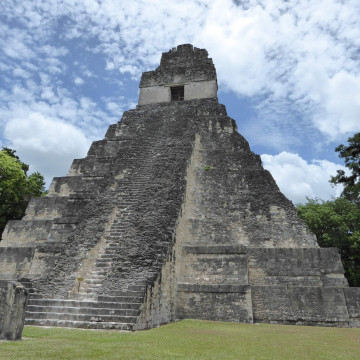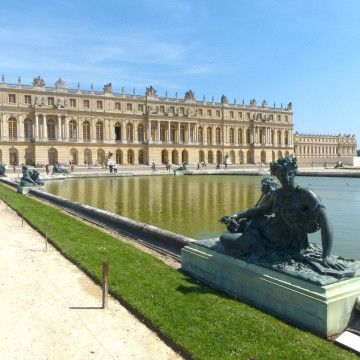Pre-Columbian - architectural style definition
The Pre-Columbian architectural style is characteristic of cultures and civilisations that existed in the Americas before the arrival of European colonisers. These include: Maya, Aztec, Inca or Teotihuacanos. This style is mainly characterised by the use of natural materials such as stone, clay and wood. Also common to these cultures was the use of calcite stones and bricks for the construction of buildings and tall pyramids, which served as places of worship and burial for rulers.
The Pre-Columbian architectural style refers to architecture derived from cultures that inhabited areas of the Americas prior to the arrival of Columbus in 1492. This rich architectural heritage encompasses a variety of building styles and techniques that were characteristic of different pre-Columbian civilisations. Below I provide information on this style, the precursors and some of the most popular buildings.
Pre-Columbian architecture developed in the areas of present-day Mexico, Central America, South America and the Caribbean.
Each civilisation had its own unique building styles and techniques, often driven by the availability of raw materials, climate and religious beliefs.
Precursors
There are many pre-Columbian civilisations that influenced the development of the architecture of this period. The most important precursors are:
Olmecs: One of the earliest known civilisations in what is now Mexico, which influenced many later pre-Columbian cultures.
Teotihuacán: A powerful city-state from the period 200 BC to 650 AD that had a significant impact on later Mesoamerican civilisations.
Zapotecs: A civilisation from areas of the present-day state of Oaxaca in Mexico, known from the city of Monte Albán.
Maya: One of the most famous and influential pre-Columbian civilisations, spread mainly over the areas of present-day Mexico, Guatemala, Belize, Honduras and El Salvador.
Aztecs: Known for their impressive capital of Tenochtitlán (now Mexico City), built on artificial islands in Lake Texcoco.
Most popular buildings
One of the most famous examples of this style is the palace complex at Teotihuacán, located in Mexico. This huge complex of buildings, consisting of pyramids, temples and living quarters, was the political, cultural and religious centre for the Teotihuacanos people. The palace consisted of several floors, and inside there were throne rooms, living chambers and a ritual hall. Inside the buildings there were also decorations and paintings that depicted religious and historical scenes.
Another example of pre-Columbian architectural style is the ruins of the city of Tulum in Mexico, which was the largest Mayan trading centre. The city consisted of several buildings, the most important of which were temples, palaces and warehouses. The biggest attraction of Tulum was a huge temple that was built on a high rock above the sea. Inside were sculptures, paintings and decorations that depicted various religious scenes
Mayan pyramids: The Maya were known for building majestic pyramids such as El Castillo in Chichen Itza (Mexico) and Tikal in Guatemala.
Pyramid of the Sun: This is one of the largest pyramids in the world, located in Teotihuacán (Mexico).
Machu Picchu: This famous urban complex belongs to the Incas and is located in the Andes Mountains in Peru.
Island cities: the Aztecs and other Mesoamerican cultures built cities on artificial islands, called chinampas, in lakes and marshes.
City of Monte Albán: Located in Oaxaca (Mexico), this city was an important Zapotec centre.
Palenque: It was an important Mayan city, known for its unique buildings and sculptures.
Pre-Columbian architecture is a fascinating testament to the advanced technical and artistic skills of these ancient civilisations. Unfortunately, many of these buildings have deteriorated over time or as a result of human activity. However, many are still standing and are preserved as important cultural heritage.











